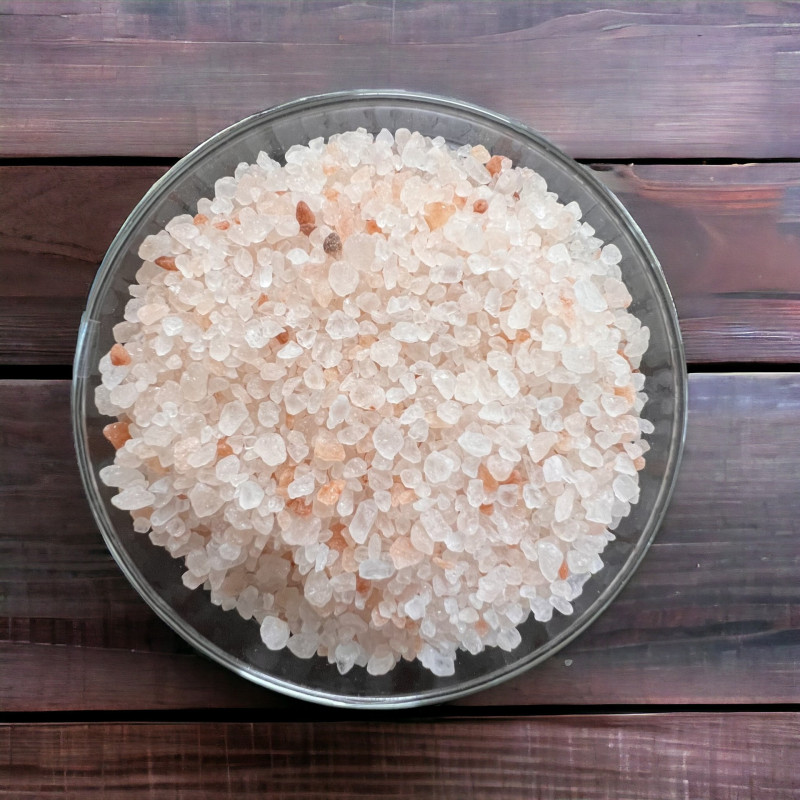
Reference: pellebuisG8


This coarse salt is delightful with its beautiful hue, ranging from pink to a more or less intense orange depending on the grains.
It leaves a pleasant, slightly ferric aftertaste on the tongue.
 Delivery
Delivery
Mondial Relay
 Returns
Returns
See conditions
 Payments
Payments
100% secure
Livré en sachet refermable
°°°
Uses in Cooking:
This salt is as useful in the kitchen as it is for bath use.
In cooking, it is primarily used for:
For baths, whether for a foot soak or a full-body immersion, it is relaxing and improves circulation in tired legs.
When preserved in large blocks, it is also used to craft decorative items, such as lamps or statues. This practice began during the Mughal Empire when artisans started making salt dishes and decorations.
Minor Drawbacks:
Who am I?
Origin: India
Other Names: Salt Diamond
Pink salt is a "land" or "rock" salt, known as halite, in contrast to traditional sea salts formed by the evaporation of seawater. It is an extremely pure salt, having formed during a time when no modern pollution existed. It is unrefined, additive-free, and non-iodized, which, while pure, lacks the essential iodine our body needs. To address this, it’s important to occasionally use traditional sea salt.
The raw mineral, "halite," contains at least 90% sodium chloride and over 80 minerals (in trace amounts), many of which are beneficial to us, including calcium, magnesium, potassium, sulfates, and traces of iron, zinc, copper, manganese, and chromium. This salt is an excellent source of natural minerals, and its pink hue is due to its iron content. Its color can range from red to pale pink, white, or even transparent, depending on the concentration of iron.
A Little History
Its formation began 250 million years ago, when a primordial sea existed where part of the Himalayan range now stands. The range formed 40 to 50 million years ago due to tectonic plate movements that pushed India towards Eurasia. The sea, trapped by rocks, gradually evaporated, leaving behind salt crystals that formed the pink salt. As tectonic plates continued to move, these crystals became embedded within the mountain.
The modern history of pink salt began with the discovery of a deposit during Alexander the Great’s military campaign in India, between 327 and 325 BCE. His army’s horses, fatigued, regained strength after licking salt stones in caves.
Data sheet
Reference: pellebuisG8
Reference: selmermorte
Reference: selpyramide
Reference: KalaNamak
Reference: selguérande
Reference: selargave
Reference: selpomme
Reference: selpetale
Reference: Fleursselsicile
Reference: Fleurssel

This coarse salt is delightful with its beautiful hue, ranging from pink to a more or less intense orange depending on the grains.
It leaves a pleasant, slightly ferric aftertaste on the tongue.